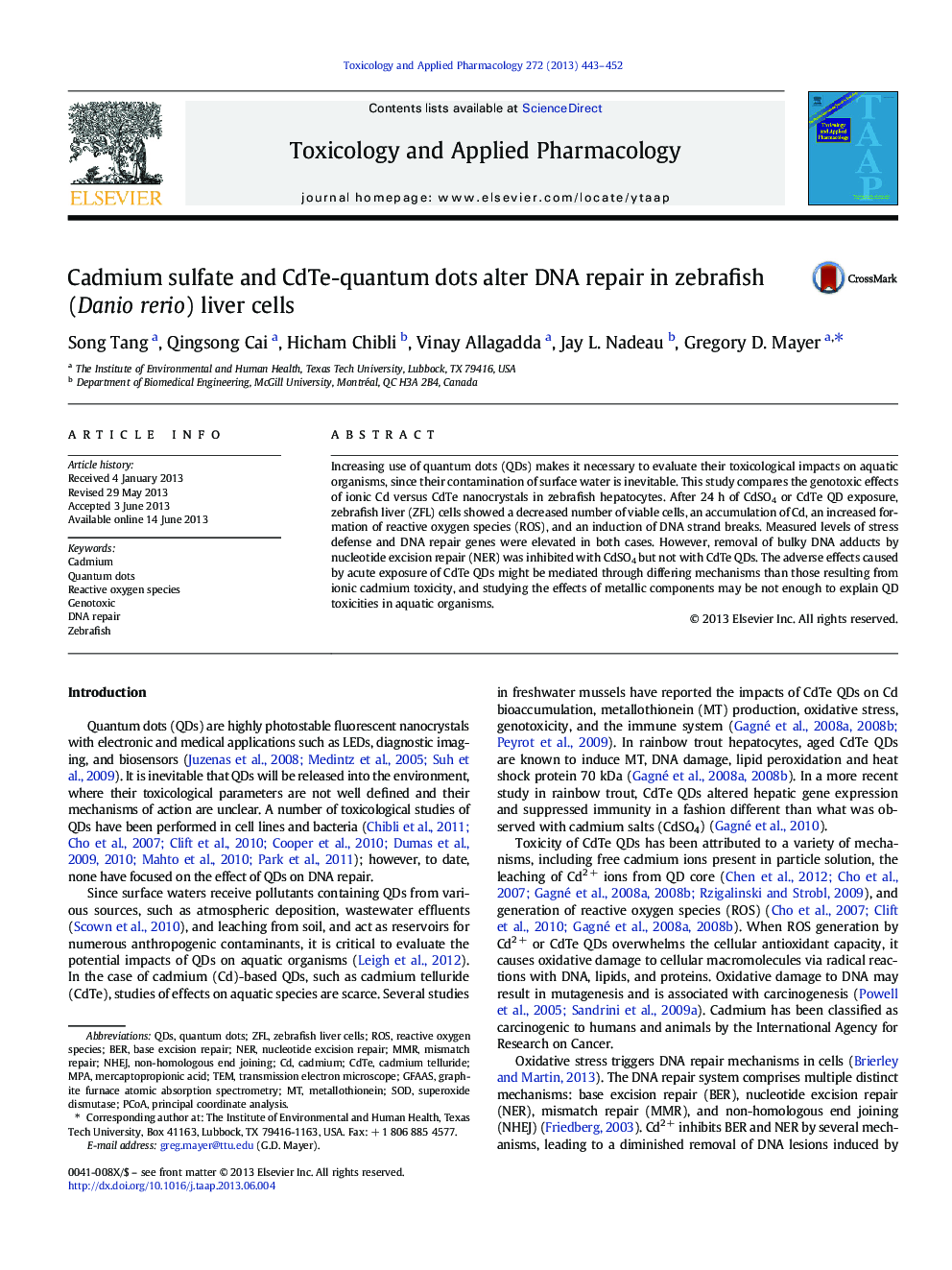| Article ID | Journal | Published Year | Pages | File Type |
|---|---|---|---|---|
| 5846664 | Toxicology and Applied Pharmacology | 2013 | 10 Pages |
â¢Both CdSO4 and CdTe QDs lead to cell death and Cd accumulation.â¢Both CdSO4 and CdTe QDs induce cellular ROS generation and DNA strand breaks.â¢Both CdSO4 and CdTe QDs induce the expressions of stress defense and DNA repair genes.â¢NER repair capacity was inhibited with CdSO4 but not with CdTe QDs.
Increasing use of quantum dots (QDs) makes it necessary to evaluate their toxicological impacts on aquatic organisms, since their contamination of surface water is inevitable. This study compares the genotoxic effects of ionic Cd versus CdTe nanocrystals in zebrafish hepatocytes. After 24Â h of CdSO4 or CdTe QD exposure, zebrafish liver (ZFL) cells showed a decreased number of viable cells, an accumulation of Cd, an increased formation of reactive oxygen species (ROS), and an induction of DNA strand breaks. Measured levels of stress defense and DNA repair genes were elevated in both cases. However, removal of bulky DNA adducts by nucleotide excision repair (NER) was inhibited with CdSO4 but not with CdTe QDs. The adverse effects caused by acute exposure of CdTe QDs might be mediated through differing mechanisms than those resulting from ionic cadmium toxicity, and studying the effects of metallic components may be not enough to explain QD toxicities in aquatic organisms.
